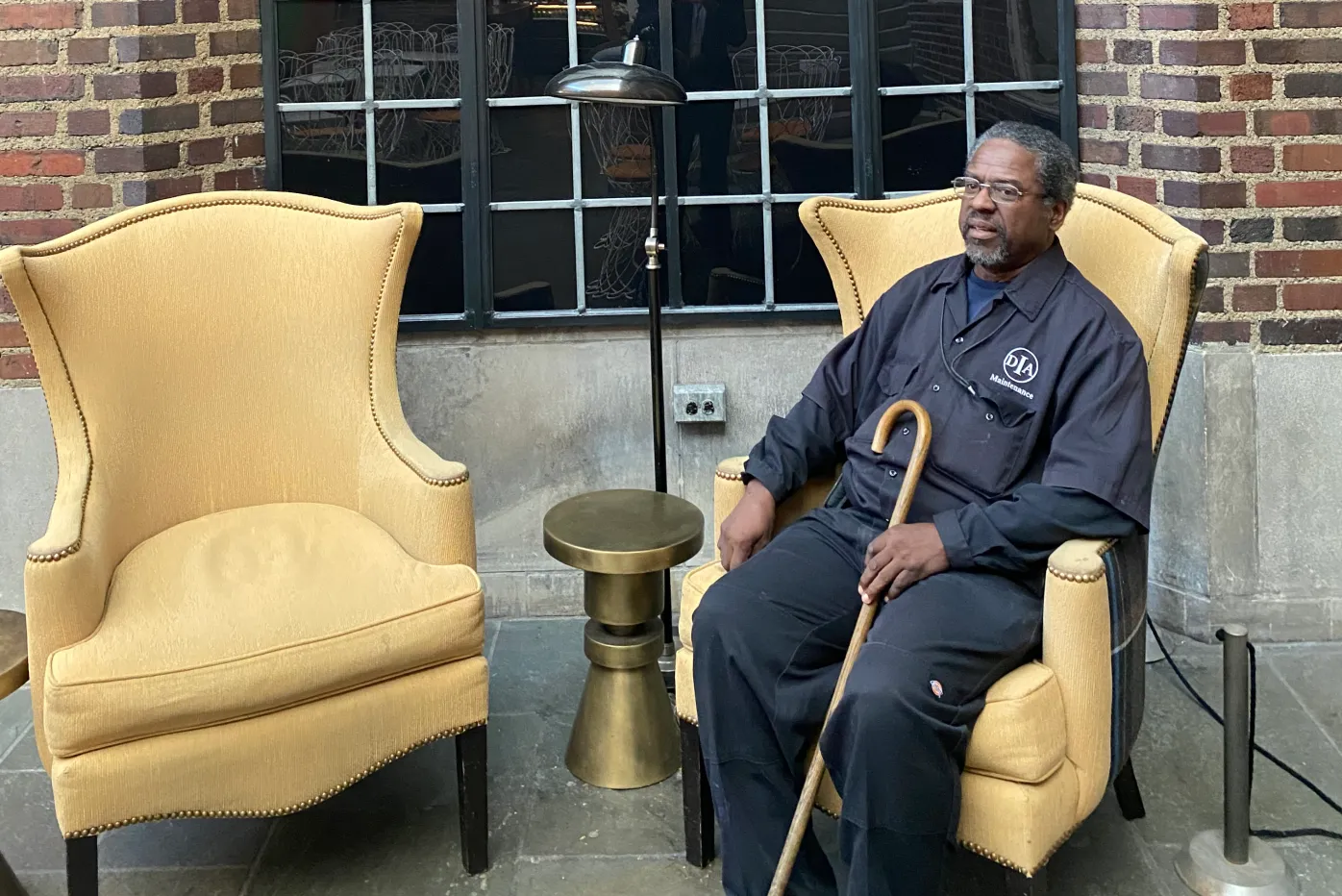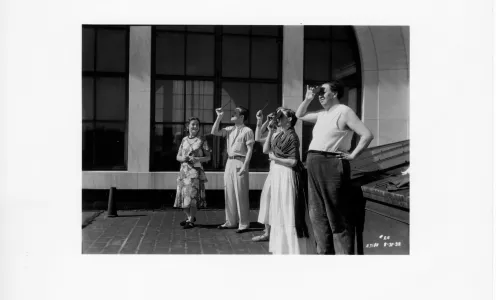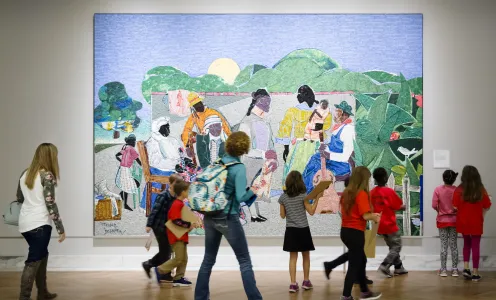The Detroit Institute of Arts staff works passionately to provide the audiences with a visit that is welcoming and comfortable, in a beautiful space, where art and community come together to inspire memorable personal experiences. These experiences do not emerge only from the extraordinary art collection, our diverse and inclusive learning programs and fun activities we offer, but also from the sum of many thoughtful details, all carefully created behind the scenes and placed by our talented team members. From the planters in Rivera Court to the windows in Kresge Court, the features of our museum that patrons know and love are sometimes more than meets the eye. Even as the director of the museum, I was amazed recently by a DIA team member who kindly gave me a tour of the inconspicuous and yet important work he has done throughout our space.
Over the last eight months, led by the DIA’s operations team and in collaboration with other departments, the museum has fully renovated our beloved Marvin and Betty Danto Lecture Hall with partial support from a 2021 Michigan Arts and Culture Council Capital Improvements Grant. The infrastructure has been upgraded and—perhaps most important for our visitors, performers, and speakers—the space is now fully compliant with the requirements of the Americans with Disabilities Act. Changes included. the construction of a new accessible seating platform at the back, transfer and companion seating, the installation of a lift for stage accessibility, and a new audio-visual system, among other crucial improvements.
The next time you attend an event there, I encourage you to take a moment to enjoy the details. One that may go unnoticed is the decoration on the front of the newly raised stage. At a distance, it appears to be ornate, veined marble; however, if you get close and look at it with an eagle eye, you will discover the marble is not real, but painted with extraordinary skill to make it look authentic—a technique called trompe l’oeil, which, translated from French, means “deceiving the eye.”
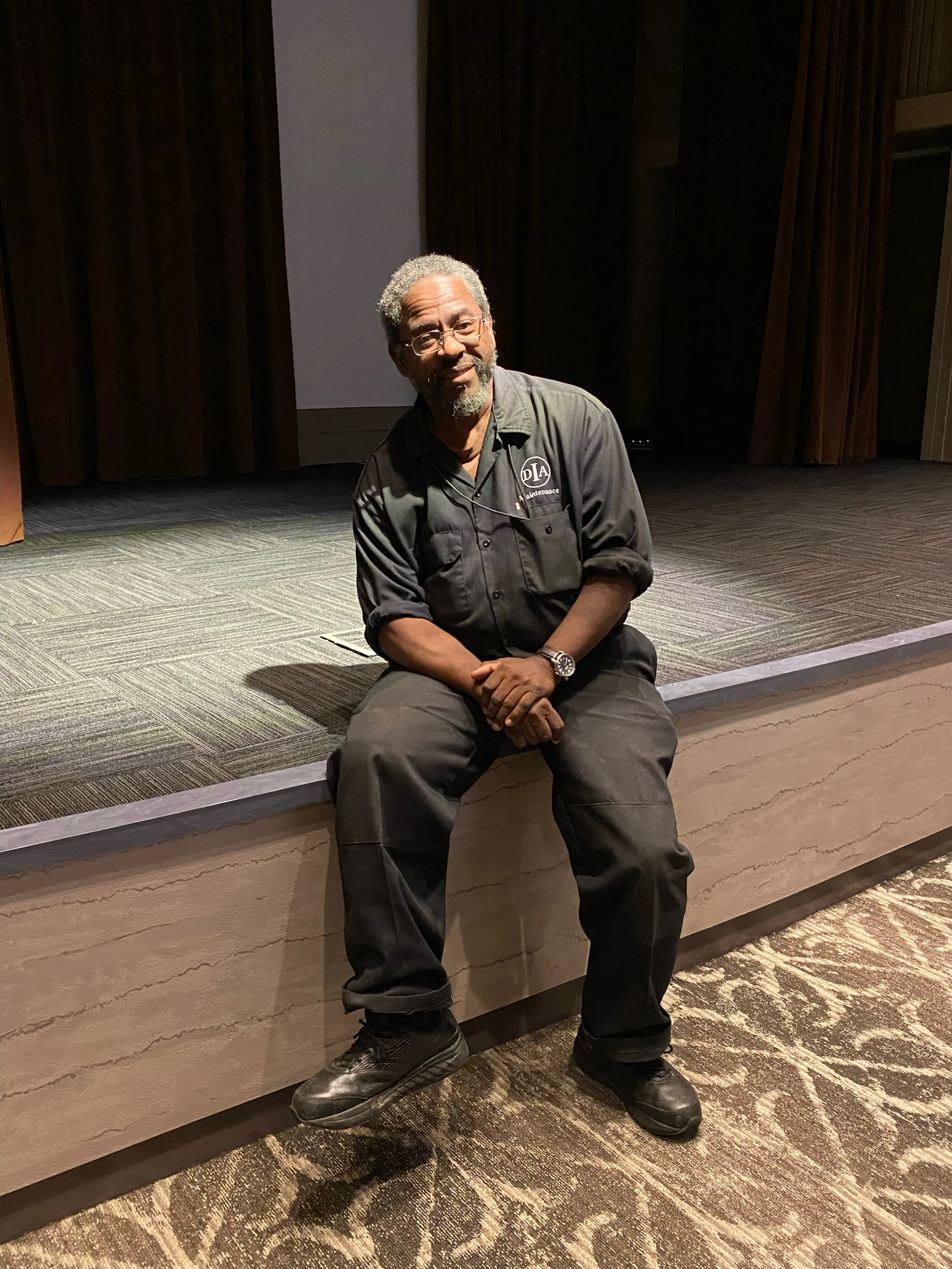
James Burts sitting on the "veined marble" decorated stage of the newly renovated Marvin and Betty Danto Lecture Hall.
James Burts, the creator of this virtuoso work, is one of our team members who works in maintenance and is also a highly skilled painter. For decades, he has helped the DIA create optical illusions such as this throughout the building. They are both a visual delight and an innovative solution.
A Detroiter, James graduated in 1972 from the Art School of the Society of Arts and Crafts, which later became the College for Creative Studies. After a few jobs, he eventually settled at General Motors where he worked in the Shipping and Receiving department. Soon, colleagues noticed his artistic talent, and GM appointed him as a photo retoucher and illustrator. In that position, he used the airbrush technique to retouch both color and black-and-white photography—in other words, he did photoshop before it even existed. James worked at GM for 28 years; the DIA hired him for our maintenance team 21 years ago. Since then, he has been helping his team with regular duties, as well as doing this amazing specialty work.
James’ personal artistic touch goes purposely “hidden” throughout the building, enhancing our visitors’ visual experience. A couple of weeks ago, he gave me a tour. We visited Rivera Court, where he pointed out the planters around the space that help protect the murals. At first glance, they appear to be made of travertine stone, the same material used by DIA architect Paul Cret to decorate this space in 1927. In fact, James has meticulously painted them to create the illusion of the creamy colored stone sprinkled with little pits and grooves. I have worked at the DIA for almost 16 years and have always thought those planters were travertine.
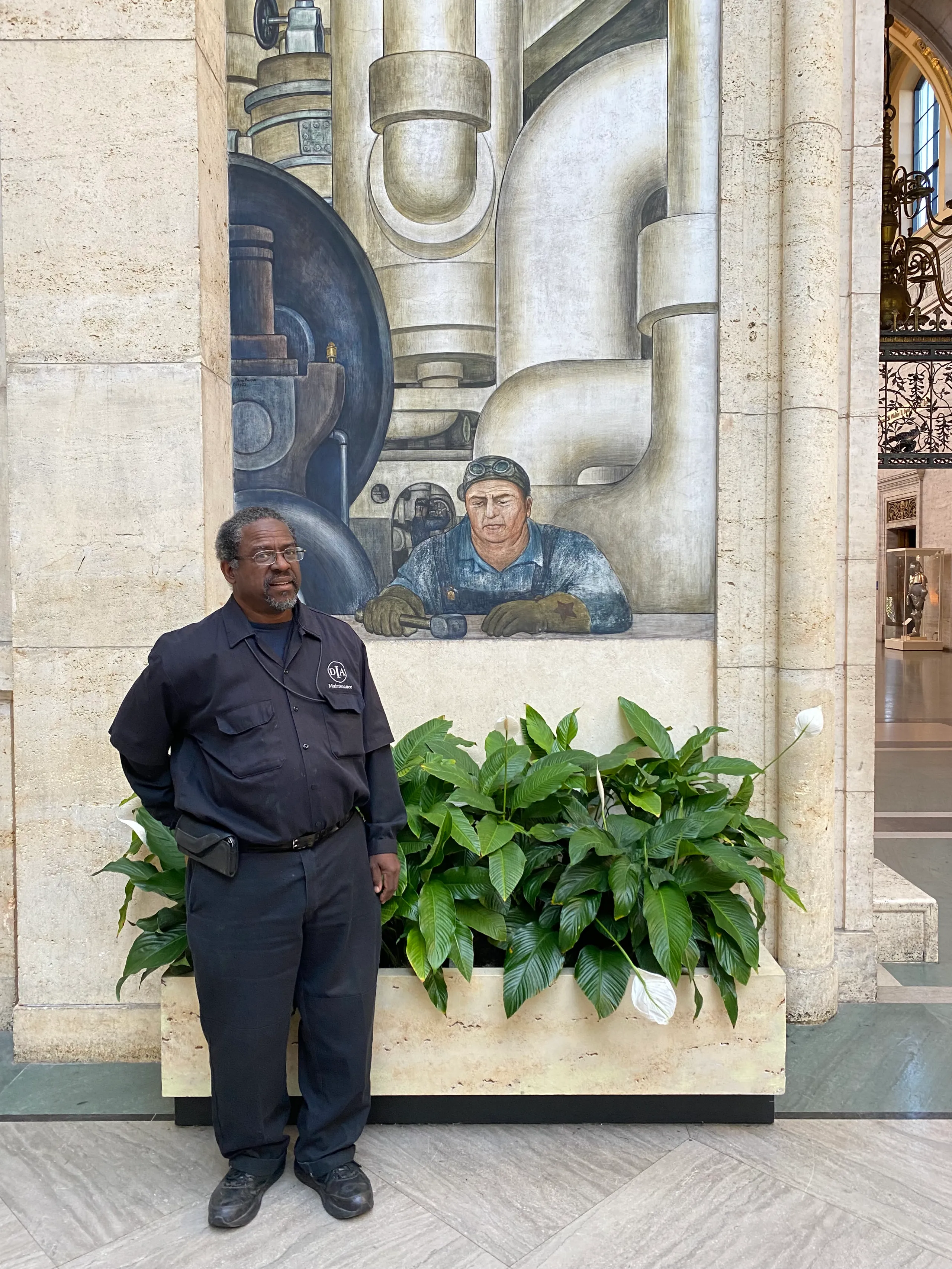
James Burts in Rivera Court next to a "travertine" planter.
James and I walked around the galleries, and he drew my attention to many of his subtle creations (big and small!), before ending at Kresge Court, where he has built and painted a large window to cover an empty space. His design replicates the original windows that enclose the Schwartz Galleries of Prints and is covered with his imitation of the leaded glass window, made with amazing skill and keen attention to all details and its materiality. This window effectively provides visual and spatial unity to Kresge Court.
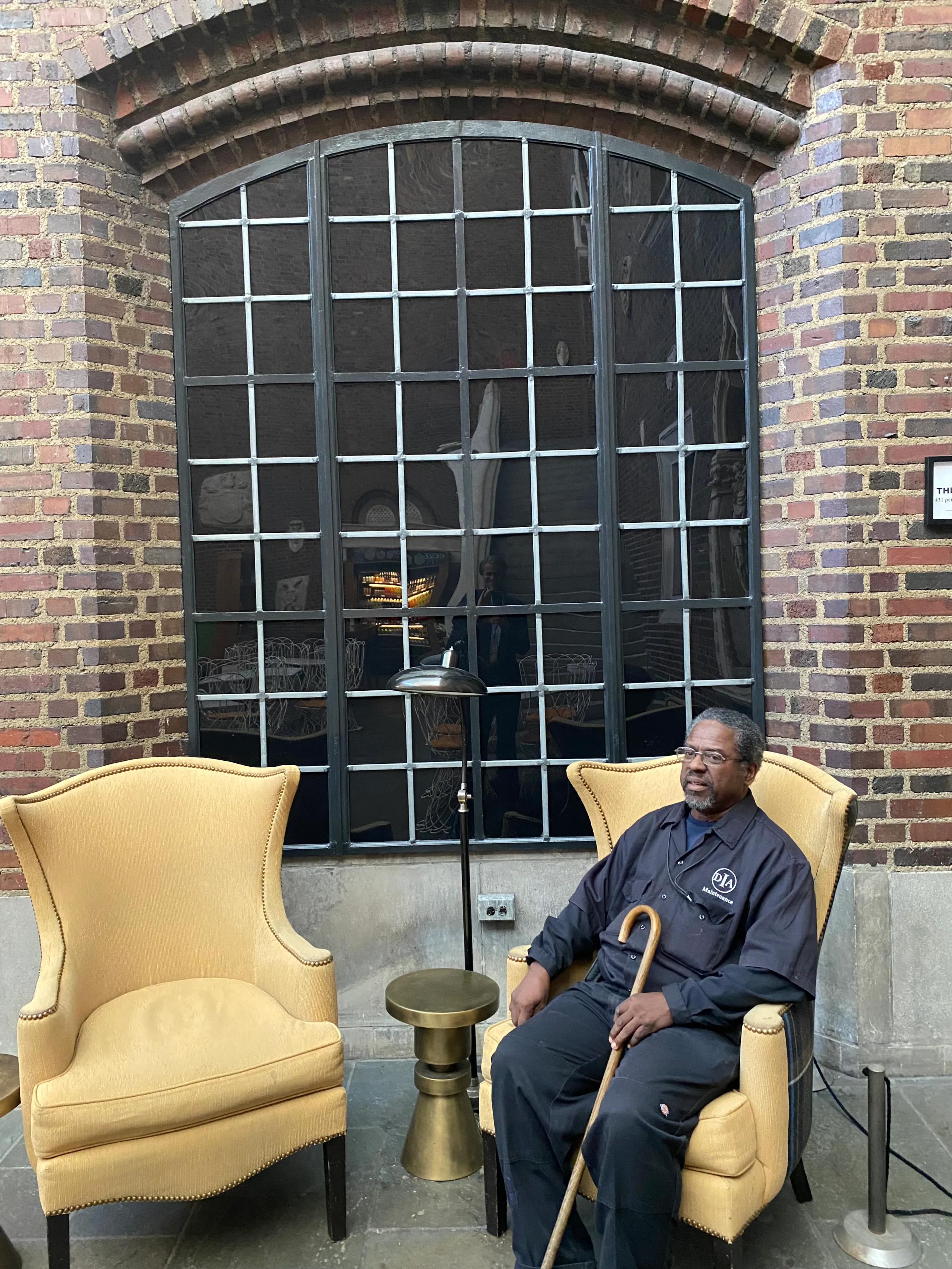
James Burts sitting at Kresge Court, next to the window he created.
James was smiling as he showed me his many creations, and I was thinking to myself that he is both an artist and a magician with a sense of humor, as our eyes are deceived by his brushes. His talent and passion are remarkable and we at the DIA are fortunate to have him on the team. He showed me many more fascinating works that aren’t included here due to the newsletter’s length limitations. Perhaps we should consider offering a trompe l’oeil tour in the museum? You would be amazed at what you see, or rather, what you don’t really see.
